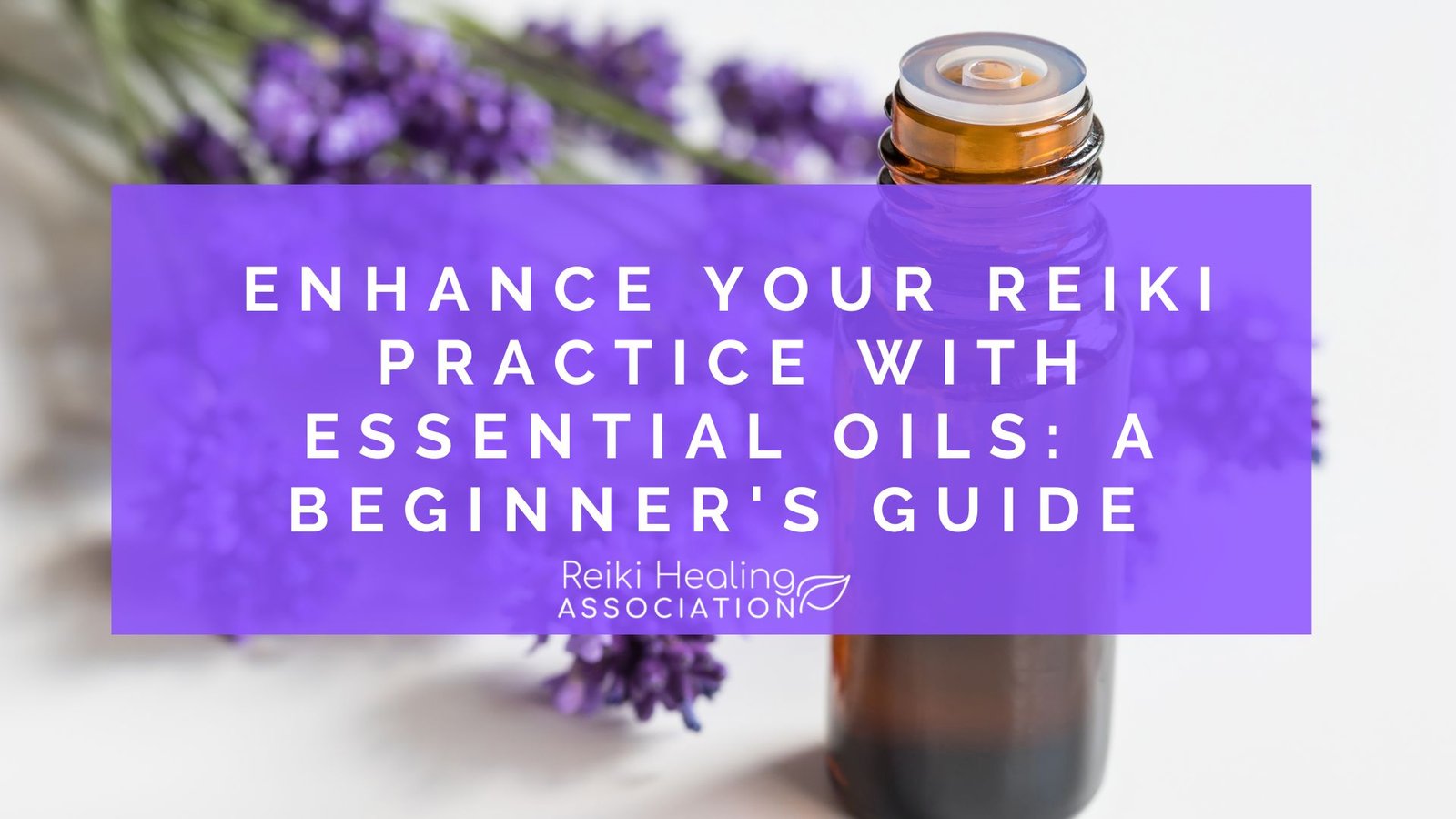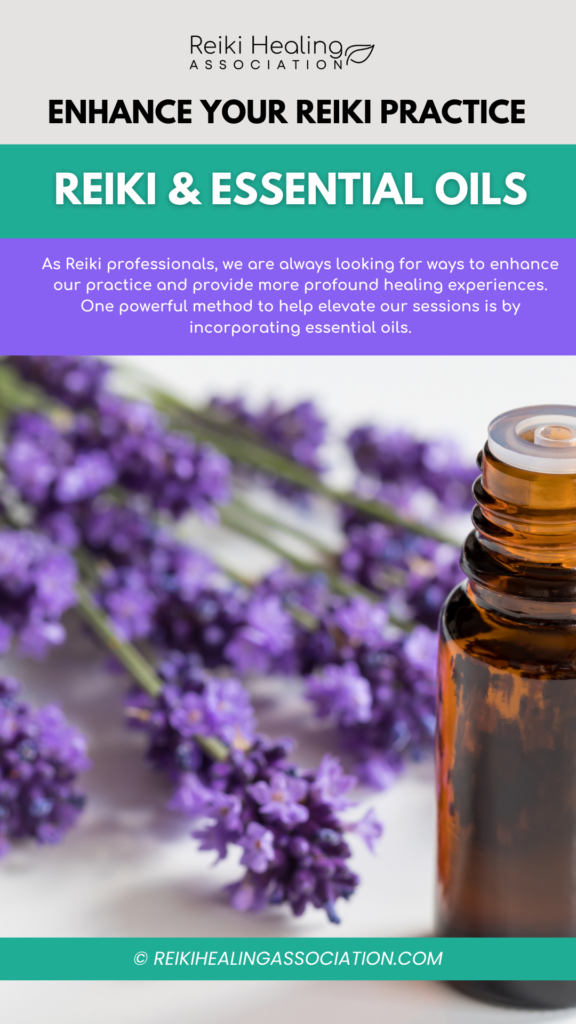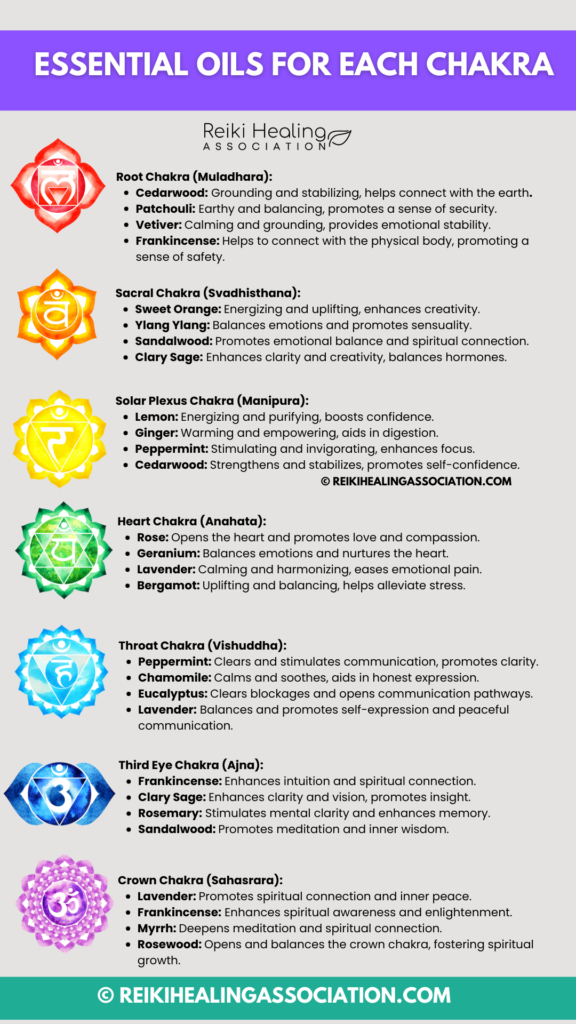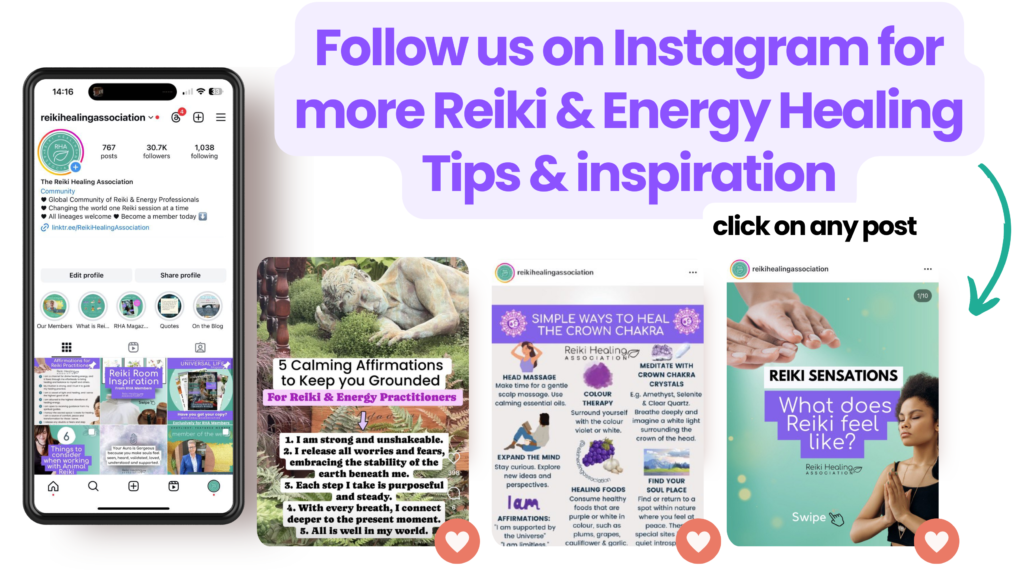
Enhance Your Reiki Practice with Essential Oils: A Beginner’s Guide
As Reiki professionals, we are always looking for ways to enhance our practice and provide more profound healing experiences. One powerful method to help elevate our sessions is by incorporating essential oils. These potent plant extracts can amplify the therapeutic effects of Reiki, creating a more immersive and restorative experience. Let’s explore how you can seamlessly integrate essential oils into your Reiki practice.
The Synergy of Essential Oils and Reiki
Essential oils, with their rich histories in various healing traditions, are renowned for their aromatic and therapeutic properties. When combined with Reiki, they can deepen relaxation, clear energy blockages, and promote emotional balance. This synergy works on multiple levels:
- Enhancing the Healing Environment: The aromatic qualities of essential oils can transform the ambiance of your Reiki space, making it more inviting and soothing. Scents like lavender, frankincense, and sandalwood are particularly effective in creating a serene environment conducive to healing. Just imagine walking into a spa and being hit by the soothing blend of essential oils being used, you instantly start to feel ready for your treatment.
- Supporting Chakra Balancing: Each chakra has its own associated essentials oils that are considered to best help bring the chakra into balance . For instance, eucalyptus and peppermint can help to balance the throat chakra, while rose and jasmine support the heart chakra. By selecting oils that align with the specific needs of your clients, you can facilitate more targeted chakra balancing.
- Deepening Meditation and Relaxation: Certain essential oils have properties that enhance meditation and bring about feelings of relaxation. Lavender, chamomile, and bergamot, for example, are known for their calming effects, helping clients to enter a more receptive state for Reiki healing.

Humans have been using Essential Oil for healing for many millennia
The use of essential oils dates back thousands of years and spans numerous ancient civilizations, each contributing to the development and application of these aromatic compounds in various cultural and therapeutic practices.
The Egyptians were among the first to use aromatic oils extensively, dating back to around 4500 BCE. They used essential oils in religious rituals, cosmetics, and for medicinal purposes. The famous Ebers Papyrus, an ancient Egyptian medical document, lists hundreds of remedies and recipes, many of which included essential oils like myrrh, frankincense, and cedarwood.
In ancient China and India, essential oils played a significant role in traditional medicine. Chinese medical texts from around 2700 BCE describe the use of herbal and aromatic treatments. In India, the practice of Ayurveda, which dates back over 3,000 years, incorporated essential oils for healing and balancing the body and mind.
The Greeks, influenced by Egyptian practices, integrated essential oils into their medical and therapeutic practices. Hippocrates, known as the father of medicine, documented the use of over 300 plant species and their oils. The Romans further developed these practices, using essential oils for bathing, massage, and fragrance. Roman soldiers also used oils such as thyme and myrrh to treat wounds and infections.
The modern era of essential oils began in the early 20th century with the work of French chemist René-Maurice Gattefossé. In 1910, Gattefossé accidentally discovered the healing properties of lavender oil when he used it to treat a severe burn on his hand. This incident led to his pioneering research in aromatherapy, coining the term itself.
During the 20th century, essential oils gained popularity in the field of alternative and complementary medicine. Research into the therapeutic properties of essential oils expanded, leading to a deeper understanding of their benefits and applications.
Today, essential oils are widely used in aromatherapy, natural medicine, personal care products, and household cleaning. Advances in scientific research continue to validate the therapeutic effects of essential oils, further integrating them into mainstream health and wellness practices.
The rich history of essential oils reflects their enduring appeal and versatility, spanning cultures and centuries as a natural means to enhance health and well-being.
What’s the Science behind Essential Oils? The Role of Aromatherapy in Stress and Anxiety Relief
“Essential oils are an important and vital part of the plant, in the same way that blood is an important and vital part of the human body.” – Robert Tisserand
Essential oils are called “essential” because they contain the “essence” of the plant’s fragrance and flavour.
Essential oils are made by steaming or pressing various parts of a plant to capture the compounds that give the plant its unique fragrance. Essential oils are rich in various chemical compounds that interact with our senses and bodies to produce therapeutic effects. These compounds include terpenes, phenols, aldehydes, and ketones, each contributing to the oil’s overall effect. These compounds work in multiple ways within our bodies. For instance, lavender essential oil contains linalool, which calms the nervous system and promotes relaxation. Tea tree oil has terpinen-4-ol, an antimicrobial agent effective in treating skin infections. Whilst, peppermint oil contains menthol, which can provide pain relief and enhance cognitive performance.
When you breathe in the scent of essential oils, the smell goes to a part of your brain called the limbic system. This part of the brain that regulates emotions, memory, and behaviour. Consequently, essential oils can influence brain chemistry, eliciting various physiological and psychological responses. Certain scents, like lavender or chamomile, for example can trigger feelings of relaxation by activating parts of the brain that promote feelings of calm. This stimulation can trigger the release of neurotransmitters like serotonin and dopamine, which help regulate mood and stress levels.
When you apply essential oils to the skink, they are absorbed into the bloodstream. Once in the bloodstream, they can circulate throughout the body and impact overall health. They can also have a local effect in the area in which they are applied.
Several studies have demonstrated the effectiveness of aromatherapy in reducing stress and anxiety:
- Lavender: Research shows that lavender essential oil can significantly reduce anxiety levels in patients before surgery, during dental procedures, and in individuals with generalized anxiety disorder.
- Bergamot: Studies indicate that bergamot oil can improve mood and reduce cortisol levels, a hormone associated with stress.
- Chamomile: Clinical trials have shown that chamomile oil can help reduce symptoms of anxiety and promote relaxation.
Whether used alone or alongside other treatments like Reiki, aromatherapy offers a holistic approach to managing stress and promoting relaxation.
Selecting Essential Oils for Reiki
“The sense of smell is closely connected with memory, mood, and emotion. It is no wonder that aromatherapy, which taps into this potent connection, can be so effective.” Valerie Ann Worwood
Choosing the right essential oils for your Reiki practice involves understanding their properties and how they align with the needs of your clients.
Each oil will have a list of properties which you can research to understand the best circumstances to work with the oil. Sometimes, your body’s instinctive response to a scent can guide you to the right oil. Or you may ask you clients to select the scents they feel drawn to.
Choose oils that correspond to the chakra you want to balance or activate. Each chakra is associated with specific essential oils.
Essential Oils for Each Chakra
Root Chakra (Muladhara)
When selecting essential oils for the Root Chakra, look for those that offer grounding and stabilizing qualities. These oils aim to establish a strong foundation and connection to the body, promoting emotional stability and physical grounding.
- Cedarwood: Grounding and stabilizing, helps connect with the earth.
- Patchouli: Earthy and balancing, promotes a sense of security.
- Vetiver: Calming and grounding, provides emotional stability.
- Frankincense: Helps to connect with the physical body, promoting a sense of safety.
Sacral Chakra (Svadhisthana)
Essential oils for the Sacral Chakra should focus on enhancing creativity and balancing emotions. These oils aim to foster a vibrant, balanced emotional state and creative expression.
- Sweet Orange: Energizing and uplifting, enhances creativity.
- Ylang Ylang: Balances emotions and promotes sensuality.
- Sandalwood: Promotes emotional balance and spiritual connection.
- Clary Sage: Enhances clarity and creativity, balances hormones.
Solar Plexus Chakra (Manipura)
For the Solar Plexus Chakra, choose oils that energize and empower, boosting self-confidence and personal power. These oils aim to stimulate energy, confidence, and clarity.
- Lemon: Energizing and purifying, boosts confidence.
- Ginger: Warming and empowering, aids in digestion.
- Peppermint: Stimulating and invigorating, enhances focus.
- Cedarwood: Strengthens and stabilizes, promotes self-confidence.
Heart Chakra (Anahata)
Oils for the Heart Chakra should focus on promoting love, compassion, and emotional balance.
- Rose: Opens the heart and promotes love and compassion.
- Geranium: Balances emotions and nurtures the heart.
- Lavender: Calming and harmonizing, eases emotional pain.
- Bergamot: Uplifting and balancing, helps alleviate stress.
Throat Chakra (Vishuddha)
To support the Throat Chakra, select oils that enhance communication and self-expression.
- Peppermint: Clears and stimulates communication, promotes clarity.
- Chamomile: Calms and soothes, aids in honest expression.
- Eucalyptus: Clears blockages and opens communication pathways.
- Lavender: Balances and promotes self-expression and peaceful communication.
Third Eye Chakra (Ajna)
For the Third Eye Chakra, choose oils that enhance intuition and mental clarity.
- Frankincense: Enhances intuition and spiritual connection.
- Clary Sage: Enhances clarity and vision, promotes insight.
- Rosemary: Stimulates mental clarity and enhances memory.
- Sandalwood: Promotes meditation and inner wisdom.
Crown Chakra (Sahasrara)
When selecting oils for the Crown Chakra, look for those that support spiritual connection and enlightenment.
- Lavender: Promotes spiritual connection and inner peace.
- Frankincense: Enhances spiritual awareness and enlightenment.
- Myrrh: Deepens meditation and spiritual connection.
- Rosewood: Opens and balances the crown chakra, fostering spiritual growth.

How they can be used in a Reiki session
There are several ways to incorporate essential oils into your Reiki practice:
- Diffusion: Using an essential oil diffuser is a simple and effective way to infuse the healing space with the chosen aroma. This method ensures that the scent is subtle whilst still creating a delightfully inviting and relaxing environment.
- Topical Application: Diluting essential oils with a carrier oil (such as jojoba or castor oil) allows for safe topical application. Where appropriate, and with the client’s consent, you can gently anoint specific areas of the client’s body, such as the temples or pulse points on the wrists.
- Inhalation: Have your client take a few deep breaths of an essential oil before or during the session. This method can be particularly grounding and help the client become more present.
- Spritzing: Creating a spritz with water and essential oils can be an effective way to cleanse the space or your client’s aura. A quick mist around the room or over the client can enhance the energetic environment.
Best Practices and Safety
While essential oils are powerful tools, it’s crucial to use them safely and mindfully:
- Quality Matters: Always use high-quality, therapeutic-grade essential oils. Purity and potency are essential for effective and safe use.
- Dilution: Essential oils are highly concentrated and should be diluted properly with a carrier oil before topical application to avoid skin irritation.
- Sensitivity Check: Be mindful of your clients’ sensitivities and allergies. Always check for any contraindications or preferences before using essential oils.
- Education: Continually educate yourself about essential oils and their properties. Understanding their effects will help you use them more effectively and responsibly.
Integrating essential oils into your Reiki practice can significantly enhance the healing experience for your clients. By creating a harmonious blend of aromatherapy and energy healing, you can offer deeper relaxation, more effective chakra balancing, and an overall enriched Reiki session. As you explore this integration, you’ll discover the profound synergy that essential oils bring to the sacred practice of Reiki, ultimately fostering a more holistic and transformative healing journey for your clients.
Like this article? Share your thoughts in the comment box below!
And for more Reiki resources, be sure to connect with the Reiki Healing Association on Instagram, where we post daily Reiki inspiration and advice for healing and growth as a Reiki Practitioner or Reiki-enthusiast! And don’t forget to follow us on Pinterest, where we are pinning positive affirmations and empowering quotes every single day.
Have you read the latest issue of Universal Life Magazine yet? As Members of the RHA you get Exclusive Access to the Magazine, and to access your copy all you need to do is log in to your Member’s Area. You can get a copy of the magazine if you subscribe to our newsletter too!
More Articles For You:
- The Beautiful Cho-Ku-Rei: Power in the Palm of Your Hand
- Reiki Vision Board: Releasing the Magic of Vision Boards with Reiki
- Self-Care for Reiki Practitioners
- Just for today I will be Grateful – How to Live Each Day with Gratitude
- Setting Up Your Week For Powerful Reiki Sessions
- What to Expect during a Reiki Session: Our Members Share the most common experiences


